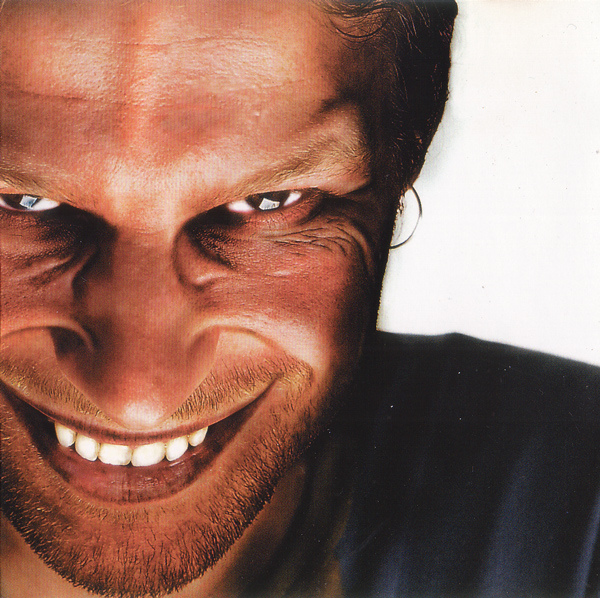It was 20 years ago today…. Mainstream media outlets like 6music and others have seen fit to mark the 20th anniversary of Beatles worshippers Oasis playing Knebworth as a remarkable milestone in British music. While the 100,00 capacity shows were undeniably impressive for their sheer size, they certainly don’t tell the whole story as far as the music of 1996 was concerned.
As the Britpop movement began to reach its climax, with an inevitable comedown sure to follow hot on its heels, another strand of UK music was also enjoying possibly its finest hour. Where the Gallagher brothers, and with them the burgeoning live dance music acts such as Knebworth support Prodigy, Underworld and Orbital were all about ‘having it large’, literally in the case of those gigs, the electronica scene was about doing it small. Small as in making tunes in your bedroom – handy if, like Aphex Twin, you claimed to make them while in a state of lucid dreaming – and not in some expensive studio. Small in terms of the audience you were aiming to reach. If indie music coined the well worn phrase “we just do what we want, if anyone else likes it it’s a bonus,” then electronica carried it on to its logical conclusion.
Many of its artists had no interest in the charts, they eschewed fame. Some, like pioneering trio The Black Dog, refused to have their photographs taken. Others, like Autechre, liked to play live in as close to complete darkness so they and their audience could concentrate on the sounds being made rather than what anyone could see
What was more important to this band of disparate brothers was originality, a chance to push this new music into new territories and come up with something more dazzling and unexpected than your rivals.
So, why 1996 in particular? Well, initially our attention to the year in question was drawn by the re-issue, in expanded form, of the only time two of the scene’s biggest names joined forces. ‘Expert Knob Twiddlers’ by Rich & Mike – better known as Richard James aka Aphex Twin and Mike Paradinas aka μ-Ziq – sounds remarkably fresh on a retrospective listen, especially considering it was made on what was rudimentary equipment even back then.
But it also exemplifies much of what was going on at the time. It had little time for adhering to strict rules of the house sounds of Chicago and the techno from Detroit that the purists liked. It didn’t feel the need to soundtrack the drug-fuelled escapades of the dancefloor like rave music, although some of it was very danceable. Nor did it feel the need to soothe and chill the listener in the way the horizontal revolution of ambient music had before it.
In fact, while these influences all played a part in where electronica was in 1996, the music was free to travel in almost any direction it liked. As Britpop looked to an ever tightening canon of work that seemed to start with The Beatles and Kinks, take in T Rex and the Pistols and end with The Smiths and Stone Roses, electronica was influenced by, sampled from and subverted many more genres both past and present.
Mike Paradinas, for instance, came from the same rave-related roots as Aphex Twin, but his ’96 solo album ‘Das Ist Ein Groovy Beat Ja?’ as Jake Slazenger, released on Warp the same month as ‘Expert Knob Twiddlers’ betrayed a love of flashy jazz funk-style keyboard solos, 70s kids TV themes and electro.
Aphex meanwhile, was busy embarking on a reinvention of sorts, messing with stern classical strings and gonzoid, cut up junglist drums on the stirring single ‘Girl/Boy Song’ and ‘Richard D James;’ album.
At the same time, another mate of James’ from Cornwall, Luke Vibert, delivered his masterpiece ‘Drum ‘n’ Bass For Papa’.
This also took inspiration from the drum & bass/jungle explosion but happened outside it, using Vibert’s love of hip-hop and lush library music alongside some unconventional but irresistible beats.
It seemed like everyone had a label and everyone was on everyone else’s label. Rich & Mike had been released on Aphex’s label Rephlex, which also boasted some wonderfully idiosyncratic works by Cylob, Mike Dred aka Kinesthesia and DMX Crew in ’96. Paradinas had just started Planet μ (pronounced Mu), which has slowly but steadily grown into the country’s undisputed leader of new underground music releases. As well as Mike’s productions the label featured Aphex amd Vibert – who had debuted on Rephlex before signing to Rising High/Blue Planet – on the classic early compilation ‘Mealtime’. Manchester musician Jega released his first EP on the Autechre-affiliated Skam label, but recorded it on Paradinas’ gear and soon after issued his debut album through Planet μ.
This, of course, is just the tip of the iceberg There are countless other labels and artists deserving of a mention, not only in the UK but in other centres of electronic excellence like Vienna and Berlin. But to do some would require something closer to a book than an article.
But perhaps the most fitting gesture of 1996 does hark back to those Knebworth-filling Gallagher brothers once more. Having failed to take ‘Wonderwall’ to the top spot, Noel and Liam witnessed the irony soaked Mike Flowers Pops easy listening version go to number one. But what did baton-wielding orchestra leader Flowers do immediately afterwards? No less than a project called ‘The Freebase Connection’, which involved handing over his orchestra’s sounds to be remixed by the scene’s leading exponents including Aphex, Vibert, The Mellowtrons and Slang.
Never mind being a ‘Rock ‘N’ Roll Star’, when it came to electronica, Flowers could certainly roll with it.




